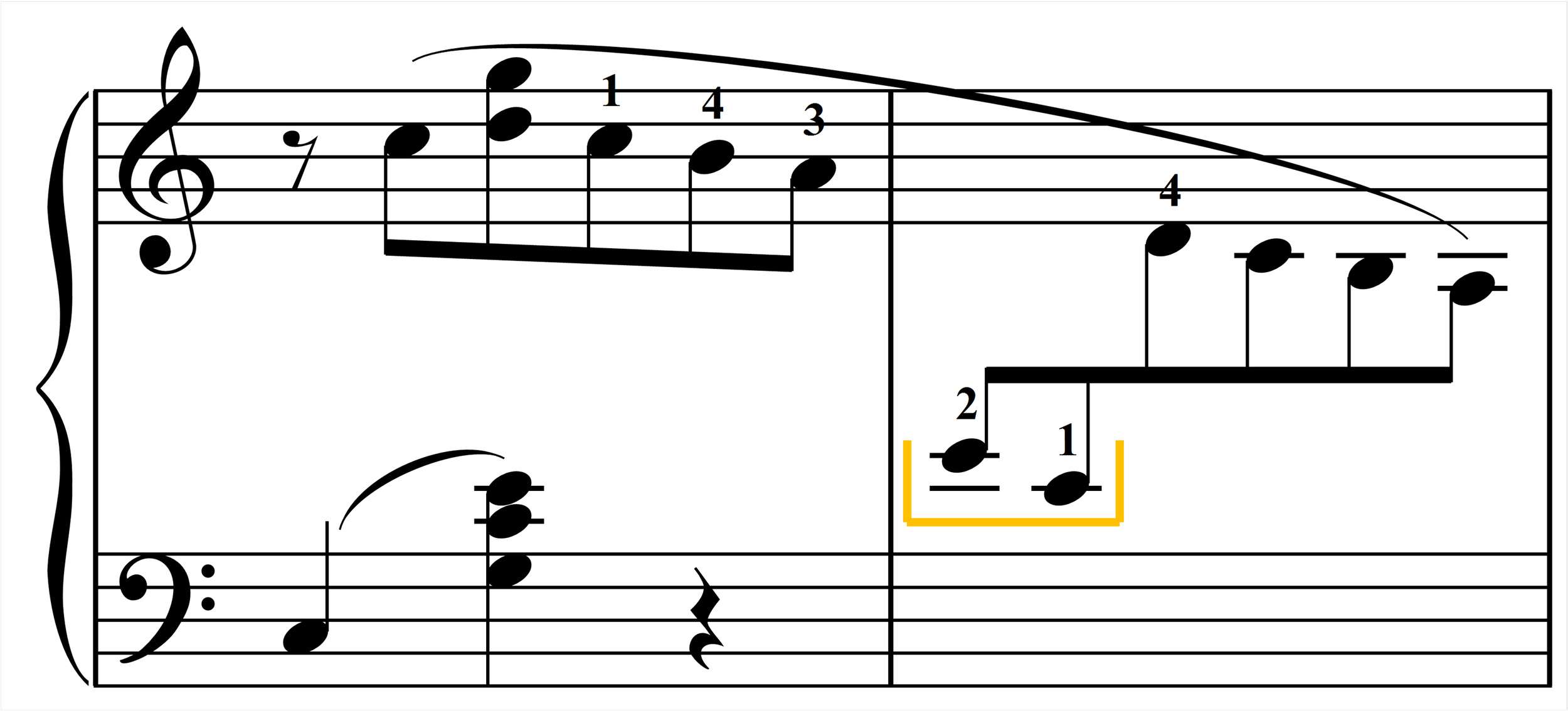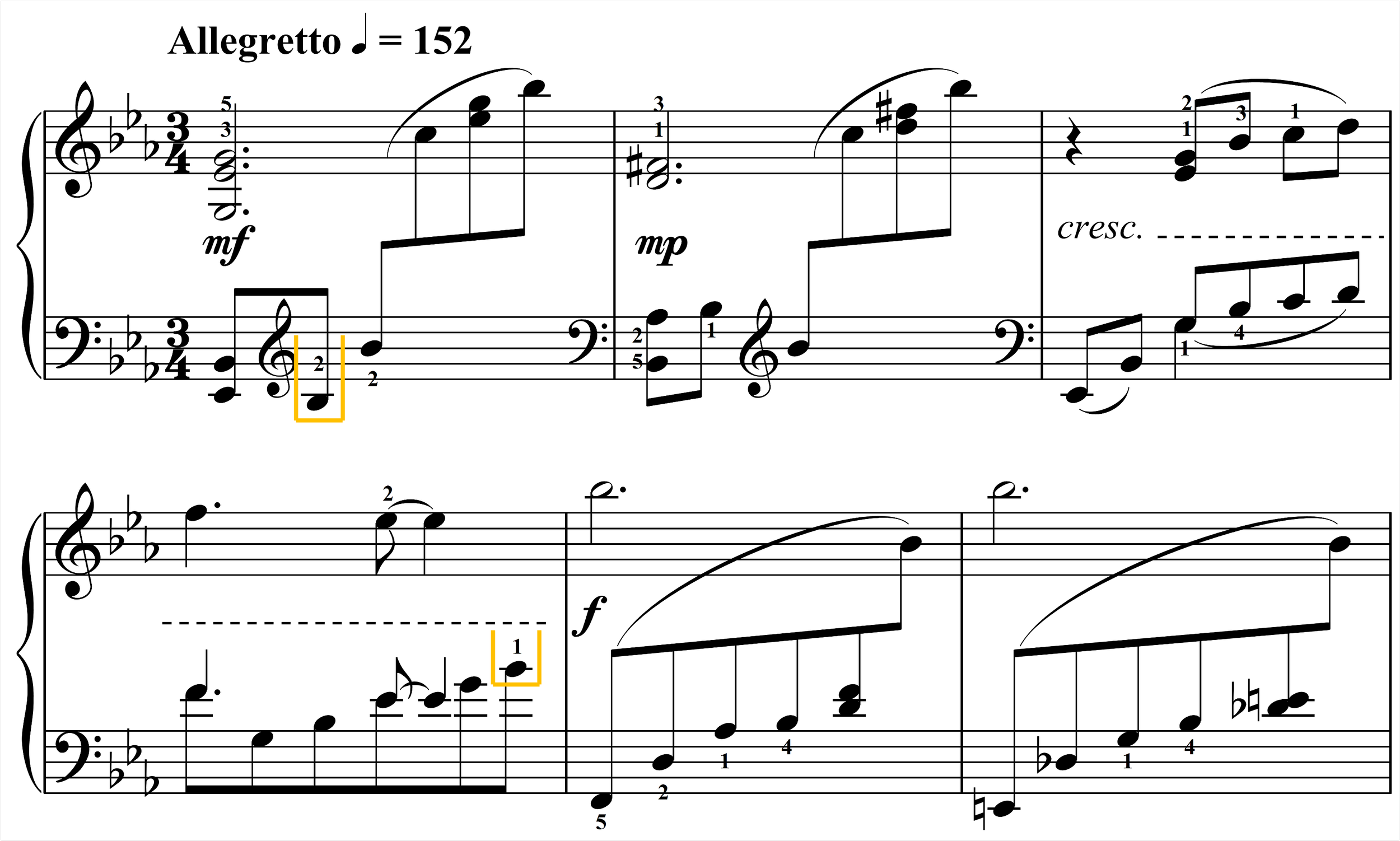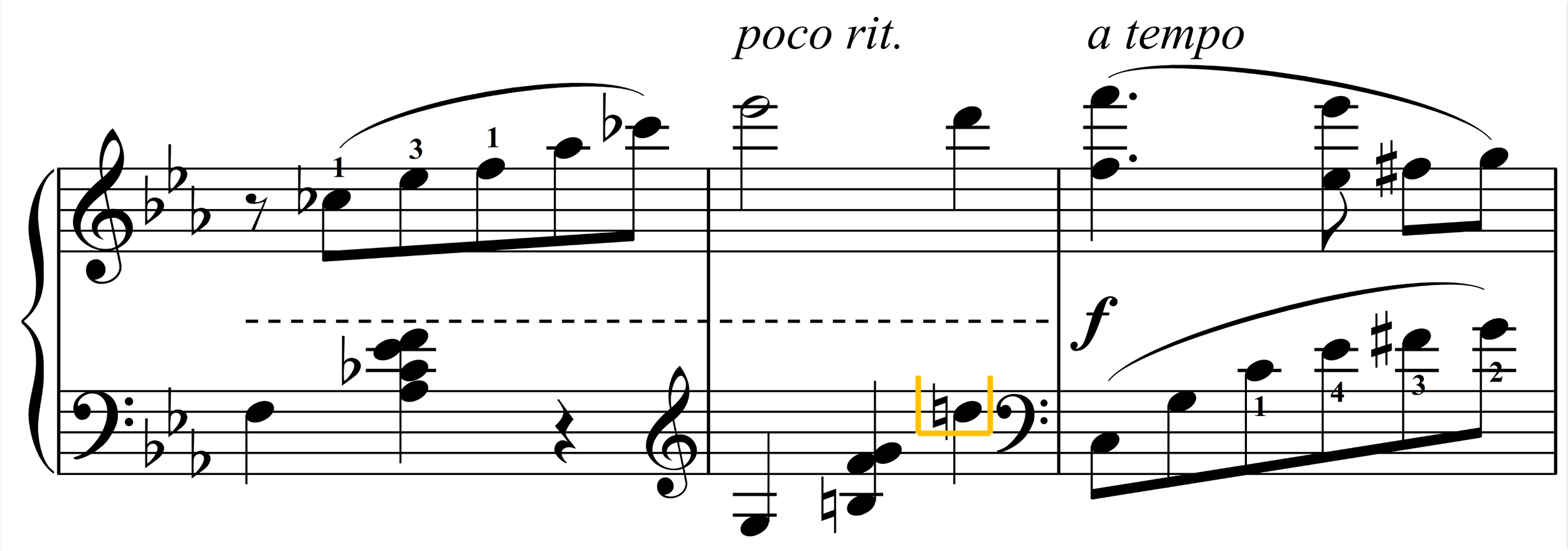“Taking the first few sixteenth notes of m. 27 in the left hand helps me achieve a smoother transition in the melody.”
Submitted by Michael Clark
Published on 9/7/2023

“Taking the first few sixteenth notes of m. 27 in the left hand helps me achieve a smoother transition in the melody.”
Submitted by Michael Clark
Published on 9/7/2023

“The right-hand thumb is already position on the D-flat in the second half of m. 36, so it can easily take the D-flat from the lower line, allowing the left hand to reposition itself to eliminate a finger crossing.”
Submitted by Michael Clark
Published on 9/7/2023

Red = RH
Blue = LH
“I prefer to play just the final note with my left hand, rather than the final two.”
Submitted by Michael Clark
Published on 9/7/2023

“Price clearly divides these notes between the hands, but I find it much easier to maintain evenness of sound by keeping them all in the right hand.”
Submitted by Michael Clark
Published on 10/6/2023

“I find dividing the notes this way a little cleaner.”
Submitted by Michael Clark
Published on 10/6/2023

“I find taking the E and G into the left hand adds ease to fluency to the right hand.”
Submitted by Michael Clark
Published on 10/6/2023

“Playing the first note of the chromatic inner line in m. 106 with the right hand improves the legato. I take the end of the thirty-second note run end in the left hand instead of crossing over.”
Submitted by Michael Clark
Published on 10/6/2023

"Some of the chromatic inner lines can be made more legato by taking a few note in the right hand.”
Submitted by Michael Clark
Published on 10/6/2023

“In m. 1, the lower B-flat is within the right-hand’s position, so I play it with the right hand. In m. 4, I play the last note in the lower staff in the right hand just as Price notates it in the following measures.”

“I take the Ds as an octave in the right hand to allow the left hand more time to shift positions.”
Submitted by Michael Clark
Published on 11/22/2023

“Taking the lowest note in the top staff in the left hand allows the soprano line to be sustained without the pedal.”
Submitted by Michael Clark
Published on 11/22/2023

“I redivide the notes between the hands several times in this section. The hand crossing in m. 37 is awkward as written, so I take the upper C-sharp in left hand. In m. 39, the top notes of the lower staff can be taken in the right hand, and the Cs can be taken as an octave in the left hand in m. 40.”
Submitted by Michael Clark
Published on 11/22/2023

“The F falls easily within the right hand’s position—taking it with the right hand saves the left hand from reaching quite as far across the body.”
Submitted by Michael Clark
Published on 11/22/2023

“This is a perfect time to use 1 on black keys—it simplifies the positions in both hands, eliminating extra shifts.”
Submitted by Michael Clark
Published on 1/22/2023

“Taking these notes in the left hand eliminates an extra position shift in the right hand.”
Submitted by Michael Clark
Published on 11/22/2023

“I find this hand arrangement to be comfortable and elegant. It isolates the melody and eliminates position shifts for the right hand.”
Submitted by Michael Clark
Published on 1/6/2024

“I divide the upward gesture this way to end with a strong finger in the right hand. Redividing the chord on the downbeat of m. 25 reduces the distance of the leap in the right hand.”
Submitted by Michael Clark
Published on 1/6/2024

“Playing the C with the right hand allows me to sound the complete chord simultaneously and better voice the top note.”
Submitted by Michael Clark
Published on 1/6/2024